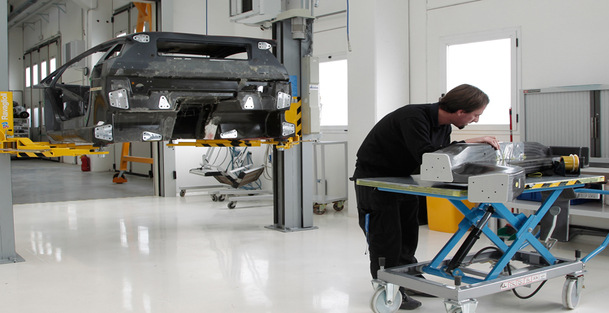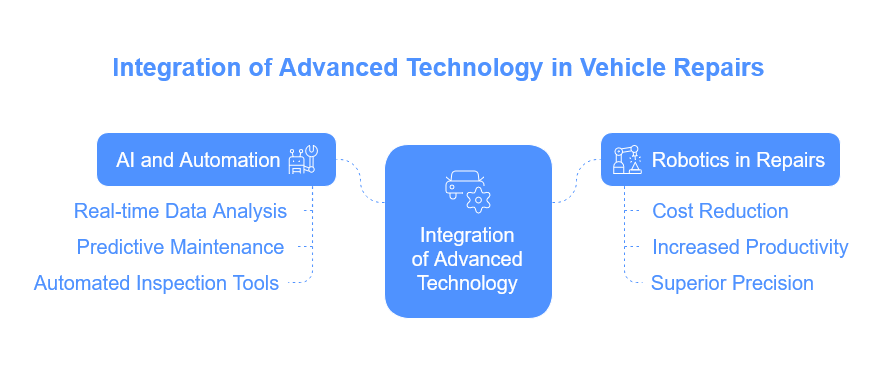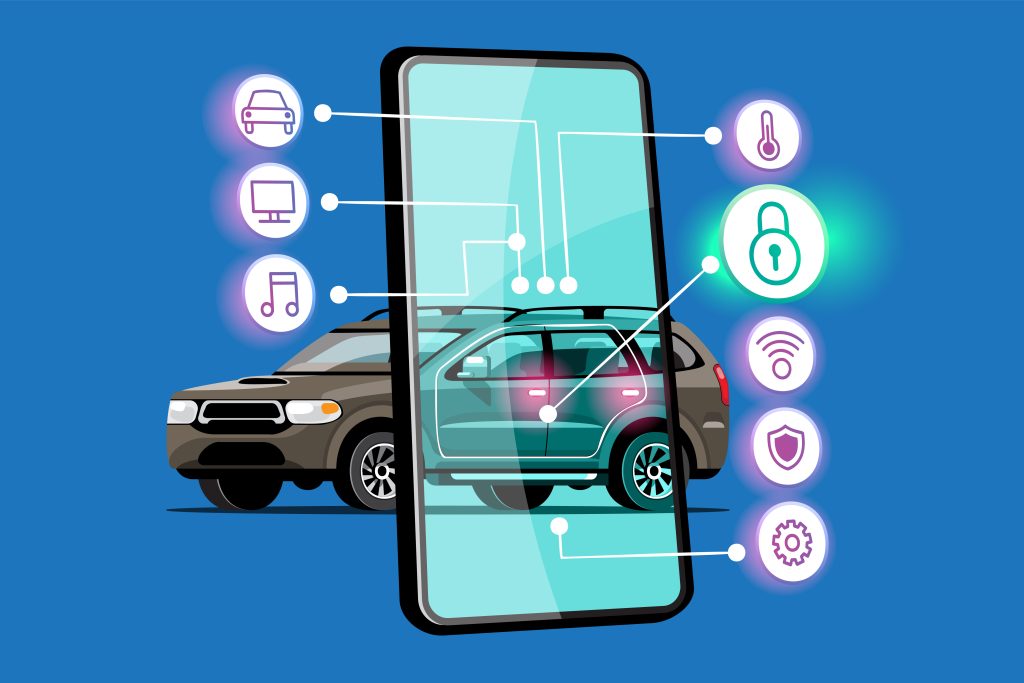
While the automotive service sector has been slow to adopt, fast-rising advancements and evolving consumer preferences compelled the traditional ways to embrace new technology.
As we look to the future, it’s critical to understand the emerging trends and to stay updated on technological breakthroughs shaping the smash repair realm.
Keeping up with the trending service trajectories is how you stay ahead of the game—prancing along with the market demands, seizing new opportunities and remaining relevant.
Let’s have a short but comprehensive look at the future of smash repair shops in 2025.
Rise of Electric Vehicles (EVs)
When you’re cruising the highway, do you notice electric cars passing you by? Or perhaps you’re behind one?
Don’t look so surprised; EVs are not brand new. They hit the road 20 years ago. It’s just that nowadays the EV market is in a growth spurt.
Increasing EV Market Share
The worldwide sales for electric cars made a huge leap to 55% in 2022, and in 2023, sales were 3.5 million higher. Annually the EV market is experiencing a 35% increase.
If we do the math, by 2030, electric cars will represent 60% of global car sales, stressing a major transition toward electric mobility.
This shift has massive implications for repair shops because EVs will drop maintenance costs significantly. Electric cars are so much different than gas-powered automobiles—no oil changes, spark plugs or timing belts.
Your maintenance costs will save around 40% because of their straightforward design and fewer moving parts.
Specialised Training and Equipment
While using EVs means fewer visits to auto repair shops, this type of car still has maintenance necessities, such as battery management, EV diagnostics and software updates.
These specialised repair services require technicians trained in handling complex components of electric cars.
Thus, smash repair shops need to invest in EV-specific training and equipment if they are to meet the demands of an expanding market. With the right knowledge, they can ensure safety and durability.
Integration of Advanced Technology

AI and Automation
The vehicles in the modern world are more intricate with advanced systems and hybrid powertrains. These elevations made traditional repair services inadequate.
That’s where AI comes in and bridges the gap between smash repair and modern car diagnostics.
Using AI tools, it’s faster to process information and easier to analyse data in real-time from vehicle sensors that may be too subtle for technicians.
This way, repair shops and technicians can detect problems earlier on and provide predictive maintenance insights and alerts to minimise the risk of component failure.
The Benefits
Automated inspection tools can optimise time-consuming repair processes. From sensors to advanced cameras, these tools can provide fast and precise detections that the naked eye can easily miss.
AI integration can compare previous data to current conditions for a more comprehensive evaluation. This speeds up vehicle analysis and reduces human errors, enhancing overall efficiency in smash repair centres.
Robotics in Repairs
Robotic units can keep running in peak conditions for longer hours. They can guarantee superior precision, maintaining consistency with fewer mistakes.
This is especially useful in repetitive maintenance tasks like tyre changes and basic vehicle assembly that can continue for hours without breaks.
By streamlining repetitive repair processes, you can significantly drop the cost of labour on low-skill tasks. That way, you can reduce costs and maximise productivity by allowing your technicians to focus on high-skill tasks.
Moreover, the quickness of robots speeds up completion time, increasing customer satisfaction and the productive rate.
Sustainability and Eco-Friendly Practises
The automotive repair industry is advancing, with a growing love for sustainable products and solutions.
Adoption of Green Materials
Auto repair shops rely on green materials to improve vehicle efficiency, like bio paints and recycled parts.
Bio-based paints are composed of renewable natural materials with zero volatile organic compounds (VOCs). These coatings can maintain quality protection to vehicles while reducing the carbon footprint.
Recycled parts for cars, especially components like fenders and interiour units are also becoming trends. These reused components can lower the demand for new materials, saving resources, reducing waste and encouraging a circular economy.
Green Certifications
Did you know that about 73% of your customers are willing to pay more for eco-friendly products?
Your auto repair shop needs to push for green initiatives and green certifications. These certifications are the embodiment of your commitment to environmental responsibility and energy efficiency.
This nudges conscious customers to work with you and buy from you, as their purchasing decisions are prioritising sustainability.
Digital Transformation

Customer Engagement Platforms
The emergence of digital platforms has been transformative to enhance customer communication. These mobile and online portals are being leveraged for convenient appointment scheduling and real-time updates.
There are even applications that allow history access and bills payment, further streamlining processes for a more seamless experience. In doing so, your auto repair business can reduce client friction and drive engagement.
Augmented Reality (AR) Tools
Another trend gaining traction in automotive repairs is the integration of augmented reality, or AR. With AR tools, your repair service centre can provide a more immersive interaction with customers.
You can use visual elements to discuss with clients the repair processes, making it a lot easier to understand. This encourages transparency and makes customers feel more involved.
Changes in Consumer Behaviour
Increased Demand for Transparency
Nowadays, consumers demand high-level transparency about the repairs done to their cars and the costs associated with them. They want to be more informed, and this shift is induced by them wanting to know where their investment is going and if they’re being charged appropriately.
To live up to these expectations, smash repair shops make use of images and videos during repair and even provide itemised estimates.
Greater transparency reassures customers that they’re getting their money’s worth, fostering trust and increasing customer satisfaction.
Preference for Convenience
Consumers need fast service to make their lives easier. That’s why you can see growth in mobile repair services, providing convenience at the customer’s location—from offices to their homes.
This keeps customers from the hassle of bringing their cars to repair shops, saving time, money and energy.
In addition, the popularity of online booking systems through smartphones caters further to the desire for a hassle-free experience, where everything can be done remotely, just a click away.
Workforce Challenges
Technician Shortage
Do you know the biggest crisis under the hood? The shortage of skilled technicians.
The transition towards electric vehicles and the usage of diagnostics tools designed a workforce market that values skilled labour.
Unfortunately, there’s very little supply of trained technicians who can keep up with the new technologies required to complete today’s repair jobs.
This leads to longer turnaround times and more costly service providers.
The workforce challenge is also worsened by the ageing human resources, without new breeds of trained talents to replace the older and more experienced technicians.
Training Partnerships
To counter the dwindling number of skilled technicians, auto repair shops choose to collaborate with educational institutions to develop specialised training programmes.
From apprenticeship to in-field learning, this training concentrates on teaching new skills to address modern automobiles and their complex auto systems.
By adjusting the curriculum to meet the growing industry needs, the younger generation will be equipped with the right knowledge to impact the workforce.
Future-Proofing Strategies for Repair Shops
Investing in Technology
Adapting new technologies creates a more efficient and productive workforce. The repetitive, time-consuming tasks that consume resources can be automated, providing speed, versatility and quality service.
This immensely improves customer experience and operational profitability, adding more value to the business.
Marketing Strategies
The world we live in and your customers are becoming more and more environmentally aware.
This sort of consciousness affects smash repair shops and the methods they have in place, driving them to operate more sustainably.
As such, businesses are emphasising sustainability and advanced services to attract customers. They advertise eco-friendly practices like bio-based paints and other recycled materials to align with their eco-conscious consumers.
Service centres also endorse cutting-edge services like AI for diagnostics, presenting themselves as trailblazers of innovation.
Conclusion
All these key trends bring possibilities and pitfalls to the future of smash repair services.
However, if you can proactively embrace the change and innovate, you and your business can thrive, even in a competitive landscape, and continue with sustainable success.
